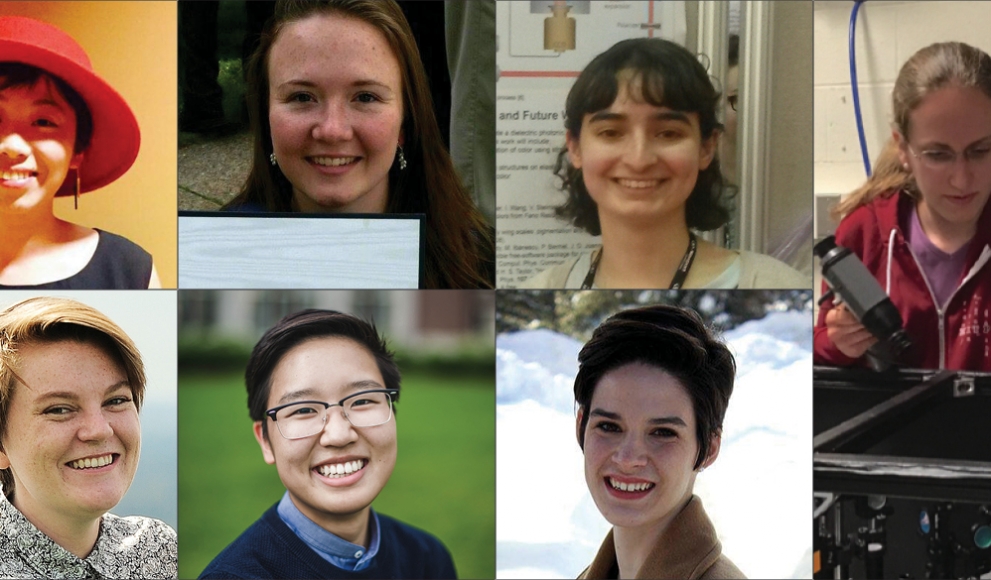Physics Department Sees Record-High Number of 2016 Graduates Enter Ph.D. Programs

Glenn Stark, professor of physics, recently shared some good news from his department. "Every year, our graduates enter doctoral programs. But this year we have seven students—by far the largest group ever—heading to some of the very best programs in the country," he said. "They are part of a graduating class—16 students—that is the largest in memory."
The seven students, their academic focus, and the schools they are attending are as follows: Carina Belvin '16, physics, MIT; Gillian Beltz-Mohrmann '16, astronomy, Vanderbilt University; Cayla Fromm '16, imaging technology, Rochester Institute of Technology; Rose Gibson '16, astronomy, Columbia University; Wanyi Li '16, operations research, Stanford University; Emma Regan '16, applied physics, University of California, Berkeley; Hannah Sim '16, chemical physics, Harvard University.
Stark said the students' success underscores the health of the sciences in general at Wellesley, and of the physics department in particular. Wellesley students can take courses at MIT and Olin College, and they have a number of research and independent project opportunities available to them, many of which are designed to be accessible to students at the beginning of their academic careers.
"Across the sciences, there is a cohort of young faculty who are bringing new ideas into the classroom," he said. "Teaching innovations—e.g., blended learning environments—are front and center in the Science Center these days."
Stark, who has taught at Wellesley since 1987, said those advances complement the physics department's longstanding commitment to teaching students analytical thinking, quantitative skills, and clear and effective communication strategies. "We believe that the skills developed during the course of the major provide an excellent foundation for a wide range of post-baccalaureate options," he said. "In the spirit of a liberal arts education, a physics major should prepare students for a lifelong experience in discovering and applying knowledge."
Li agrees. Her first physics course at Wellesley was taught by Ted Ducas, professor of physics, she said he encourages students to study a wide range of subjects. "He is the reason I majored in physics," said Li, who took a substantial number of economics, computer science, and math courses, as well as natural science and social science classes.
Belvin, served as co-president of the Society of Physics Students (SPS) during her senior year, also praised the department's faculty. "Wellesley physics professors are very dedicated to their students, and they teach not only physics concepts but also how to think like a physicist," she said. "Physics professors generously volunteer their time to join students for SPS-sponsored lunchtime discussions about their research, their career path, or a recent discovery in their subfield of physics."
Regan describes the department as incredibly supportive. "Wellesley, and Wellesley physics, prepares students academically, but more importantly, it teaches students to be confident," she said. "We are confident in our skills, and we are not afraid to ask questions or make mistakes. I graduated with confidence that I can contribute to the physics community, and I am thrilled to begin."
Stark said he and his colleagues appreciate such comments, but he is also quick to note that the class of 2016 graduates who will enter Ph.D. programs are all first-rate students. "They have taken advantage of the many opportunities presented to them at Wellesley and have developed self-reliance and a healthy streak of independence—traits that make them ideal candidates for excellent graduate programs," he said.
